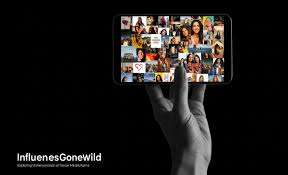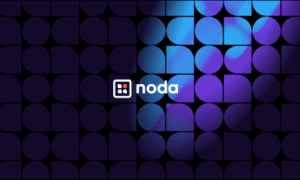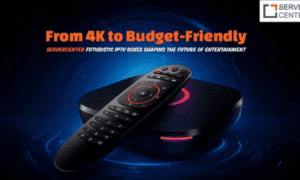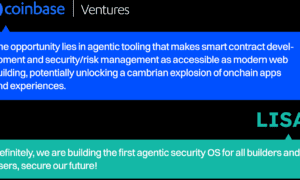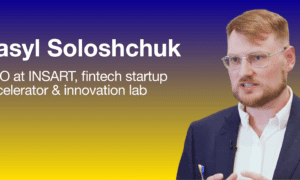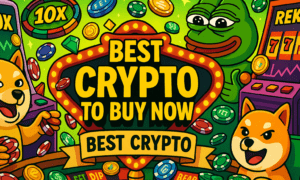Introduction to InfluencersGoneWild
The term “InfluencersGoneWild” has emerged as a significant phenomenon in digital culture, referring to instances where social media influencers engage in controversial, unexpected, or boundary-pushing behavior that deviates from their typical content. This comprehensive guide examines the origins, implications, and broader cultural context of this trend, providing expert analysis of how influencer behavior shapes and reflects modern digital society.
What Does InfluencersGoneWild Mean?
InfluencersGoneWild encompasses several related concepts in the influencer ecosystem:
Content Evolution and Boundaries
The phrase typically describes situations where influencers:
- Push Content Boundaries: Move beyond their established niche into more provocative territory
- Controversial Pivots: Make sudden shifts in content style or subject matter
- Scandal Documentation: Instances where influencers’ private behaviors become public
- Platform Violations: Content that challenges or violates social media guidelines
- Authentic vs. Curated: The gap between influencers’ public personas and real behavior
The Digital Context
This phenomenon exists within the broader landscape of:
- Social media platform dynamics
- Influencer marketing industry pressures
- Audience engagement metrics
- Content monetization strategies
- Digital culture evolution
Origins and Evolution of the Phenomenon
Early Social Media Era (2005-2010)
The concept began with early social media platforms:
- Authentic, unfiltered content was the norm
- Limited monetization created less pressure for curation
- Smaller audiences meant less scrutiny
- Platform guidelines were still developing
The Rise of Influencer Culture (2010-2015)
As influencing became professional:
- Curated personas became standard
- Brand partnerships created authenticity concerns
- Audiences grew increasingly sophisticated
- The gap between public and private personas widened
Modern Influencer Ecosystem (2015-Present)
Today’s landscape includes:
- Platform-specific content strategies
- Professional management teams
- Strict brand partnership agreements
- Increased public scrutiny and accountability
- Cancel culture and rapid reputation shifts
Why Influencers “Go Wild”: Understanding the Motivations
Algorithmic Pressure
Social media algorithms favor:
- Engagement-Driving Content: Controversial content generates more comments and shares
- Novelty Factor: Platforms prioritize new or unexpected content types
- Watch Time: Provocative content keeps audiences engaged longer
- Virality Potential: Boundary-pushing content spreads faster
Financial Incentives
Economic factors include:
- Declining organic reach requiring bolder content
- Competition for brand deals and sponsorships
- Platform monetization favoring high engagement
- Audience growth plateaus necessitating reinvention
- Premium content subscription services (OnlyFans, Patreon)
Authenticity Paradox
Influencers face contradictory pressures:
- Audiences demand “authentic” content
- Brands require polished, on-brand messaging
- Personal lives versus public personas
- Mental health impacts of constant curation
Career Pivots and Reinvention
Strategic reasons include:
- Expanding into new demographics
- Breaking free from limiting niches
- Demonstrating range and versatility
- Responding to changing audience interests
Types of InfluencersGoneWild Content
Controversial Opinions and Takes
Influencers gain attention through:
- Unpopular or divisive viewpoints
- Political commentary outside their niche
- Industry criticism or whistleblowing
- Personal revelations or confessions
Platform Boundary Testing
This includes:
- Content that approaches but doesn’t cross platform guidelines
- Strategic use of suggestive imagery or language
- Exploiting gray areas in content policies
- Cross-platform content variations
Lifestyle Revelations
Behind-the-scenes content showing:
- Unfiltered daily reality
- Relationship drama and breakups
- Financial struggles or successes
- Mental health challenges
- Personal conflicts or feuds
Professional Controversies
Career-related incidents such as:
- Brand partnership failures
- Copyright or plagiarism issues
- Team or collaboration conflicts
- Ethical business practice questions
The Psychology Behind the Phenomenon
Parasocial Relationships
Audiences develop one-sided relationships where:
- Followers feel personally connected to influencers
- Violations of expected behavior feel like personal betrayals
- Audiences invest emotionally in influencers’ choices
- Boundary-crossing creates cognitive dissonance
Schadenfreude and Spectacle
Human psychology drives interest through:
- Entertainment value of others’ misfortunes
- Social comparison and validation
- Moral superiority feelings
- Voyeuristic tendencies in digital spaces
Identity and Projection
Influencers represent:
- Aspirational lifestyles
- Value systems and beliefs
- Social status markers
- Personal identity components for followers
Platform-Specific Manifestations
Instagram’s visual focus creates:
- Curated aesthetic expectations
- Stories vs. feed content dynamics
- Algorithm changes forcing adaptation
- Competition with TikTok and other platforms
TikTok
Short-form video encourages:
- Rapid content creation and experimentation
- Trend participation and remixing
- Lower production barriers
- Younger, more forgiving audiences
YouTube
Long-form content allows:
- Deep dives and explanations
- Apology videos and reputation management
- Documentary-style revelation content
- Monetization through ad revenue
Twitter/X
Text-based platform facilitates:
- Real-time reactions and hot takes
- Direct controversies and call-outs
- Screenshot culture and receipts
- Rapid information spread
Subscription Platforms
OnlyFans and Patreon enable:
- Content beyond mainstream platform restrictions
- Direct monetization from dedicated fans
- Controversial pivots from mainstream content
- Financial independence from brand deals
Impact on Influencer Marketing Industry
Brand Partnership Complications
Companies face challenges with:
- Risk Assessment: Evaluating influencer stability and reputation
- Contract Clauses: Morality and behavior stipulations
- Crisis Management: Responding to influencer controversies
- ROI Uncertainty: Unpredictable influencer behavior affecting campaigns
Industry Adaptation
The marketing sector has evolved through:
- More rigorous vetting processes
- Performance-based compensation models
- Shorter partnership agreements
- Diversified influencer portfolios
- Micro-influencer strategies
Authenticity in Marketing
Brands navigate:
- Consumer desire for genuine partnerships
- Influencer pressure for creative freedom
- Balance between control and authenticity
- Long-term relationship building
Cultural and Social Implications
Digital Labor Conditions
The phenomenon highlights:
- Unsustainable content creation demands
- Mental health impacts of public life
- Lack of traditional employment protections
- Pressure to constantly engage and perform
Privacy Erosion
Boundaries between public and private blur:
- Audience expectations for access
- Monetization of personal moments
- Family and relationships in content
- Long-term digital footprint concerns
Youth Impact
Younger audiences experience:
- Normalized boundary-pushing behavior
- Unrealistic career expectations
- Parasocial relationship development
- Digital literacy challenges
Gender Dynamics
The phenomenon often intersects with:
- Different standards for male vs. female influencers
- Sexualization and objectification issues
- Empowerment vs. exploitation debates
- Platform policy enforcement disparities
Notable Patterns and Case Studies
The Apology Video Cycle
A recognizable pattern includes:
- Controversial incident or revelation
- Initial silence or deflection
- Public pressure and criticism
- Apology video release
- Authenticity questioning
- Gradual return to normal content
- Audience division and debate
Platform Migration
Influencers often:
- Move to less restrictive platforms
- Maintain presence across multiple sites
- Test content boundaries differently per platform
- Use migration as career reinvention
Community Fracture
Controversies typically cause:
- Loyal fans vs. critics division
- Subreddit and forum discussions
- Commentary channel coverage
- Long-term reputation impacts
Ethical Considerations
Influencer Responsibility
Questions arise about:
- Duty of care to young audiences
- Transparency in content creation
- Honest product endorsements
- Mental health disclosure
- Correction of misinformation
Platform Accountability
Social media companies face scrutiny regarding:
- Content moderation consistency
- Algorithm promotion of controversial content
- Creator support and resources
- Policy enforcement equity
Audience Role
Viewers must consider:
- Healthy engagement boundaries
- Critical media consumption
- Parasocial relationship awareness
- Digital citizenship responsibilities
Managing and Preventing Controversies
For Influencers
Best practices include:
- Clear Brand Identity: Establish and maintain consistent values
- Team Support: Professional management and PR guidance
- Boundary Setting: Define personal vs. public life limits
- Crisis Planning: Prepare for potential controversies
- Authentic Communication: Maintain genuine audience connection
- Mental Health Priority: Regular breaks and professional support
- Legal Protection: Contracts and trademark management
For Brands
Protective measures involve:
- Comprehensive influencer vetting
- Detailed partnership agreements
- Regular relationship check-ins
- Crisis response protocols
- Diversified marketing strategies
- Performance monitoring systems
For Audiences
Healthy consumption includes:
- Recognizing parasocial dynamics
- Maintaining critical perspective
- Supporting positive creators
- Setting personal boundaries
- Diversifying content sources
The Future of Influencer Culture
Emerging Trends
The landscape is shifting toward:
- Niche Micro-Communities: Smaller, more engaged audiences
- Authenticity Premium: Value on genuine, unfiltered content
- Platform Diversification: Less dependence on single platforms
- Professional Standards: Industry regulation and best practices
- Mental Health Awareness: Open discussion of creator wellness
Technology Impact
Developments affecting the space:
- AI content creation and detection
- Virtual influencers and avatars
- Blockchain and NFT integration
- Enhanced content moderation tools
- Immersive platforms (VR/AR)
Regulatory Landscape
Potential changes include:
- Advertising disclosure requirements
- Platform accountability legislation
- Creator classification (employee vs. contractor)
- Youth protection regulations
- International policy harmonization
Expert Perspectives
Media Literacy Importance
Experts emphasize:
- Critical evaluation skills
- Understanding platform economics
- Recognizing manipulation tactics
- Separating persona from person
- Healthy digital engagement
Industry Evolution
Professionals predict:
- Maturation of influencer marketing
- Professionalization of creator economy
- Increased transparency demands
- Sustainable creator practices
- Quality over quantity focus
Navigating the InfluencersGoneWild Landscape
For Content Creators
Strategic approaches include:
- Define Your Values: Establish clear boundaries before pressure arises
- Build Sustainable Practices: Avoid burnout-driven decisions
- Cultivate Loyal Community: Quality audience over quantity
- Maintain Perspective: Remember your original motivations
- Seek Professional Support: Mental health and business guidance
- Plan Long-Term: Build careers beyond viral moments
For Consumers
Informed consumption involves:
- Recognize Entertainment: Understand content is curated performance
- Verify Information: Don’t accept claims without evidence
- Support Responsibly: Vote with engagement and money
- Maintain Boundaries: Limit parasocial investment
- Encourage Positive Behavior: Reward authentic, ethical content
For Industry Stakeholders
Responsible practices include:
- Prioritize Creator Welfare: Sustainable partnership terms
- Transparent Communication: Clear expectations and feedback
- Fair Compensation: Value creation appropriately
- Risk Mitigation: Prepare without exploitation
- Industry Standards: Support professional development
Common Misconceptions
“It’s All Calculated”
Reality: While some controversies are strategic, many result from:
- Poor judgment under pressure
- Mental health struggles
- Genuine mistakes or evolution
- Unexpected circumstances
“They Deserve What They Get”
Reality: Consider:
- Human beings behind screens
- Mental health consequences
- Disproportionate responses
- Rehabilitation possibilities
“Traditional Media is Better”
Reality: Both have issues with:
- Editorial control and bias
- Commercial pressures
- Authenticity questions
- Accountability challenges
Conclusion
InfluencersGoneWild represents more than scandalous headlines—it’s a window into the complex dynamics of modern digital culture. The phenomenon reveals tensions between authenticity and curation, commercial pressures and creative freedom, public personas and private lives.
Understanding this landscape requires recognizing that influencers are real people navigating unprecedented career paths with limited guidance, immense pressure, and constant public scrutiny. Simultaneously, their influence on audiences—particularly young people—demands responsibility and ethical consideration.
As the creator economy matures, the industry must develop sustainable practices, platforms must implement fair policies, audiences must engage critically, and influencers themselves must balance opportunity with authenticity. The “gone wild” moments that capture attention often mask deeper conversations about digital labor, mental health, privacy, and the kind of online culture we want to create.
By examining this phenomenon through multiple lenses—psychological, economic, cultural, and ethical—we can better navigate the influencer landscape as creators, consumers, and industry participants. The future of influencer culture depends on learning from these controversial moments and building systems that support authentic, sustainable, and responsible content creation.
This article provides educational analysis of digital culture phenomena based on publicly available information and media literacy principles. It does not endorse or promote specific behaviors or platforms.

